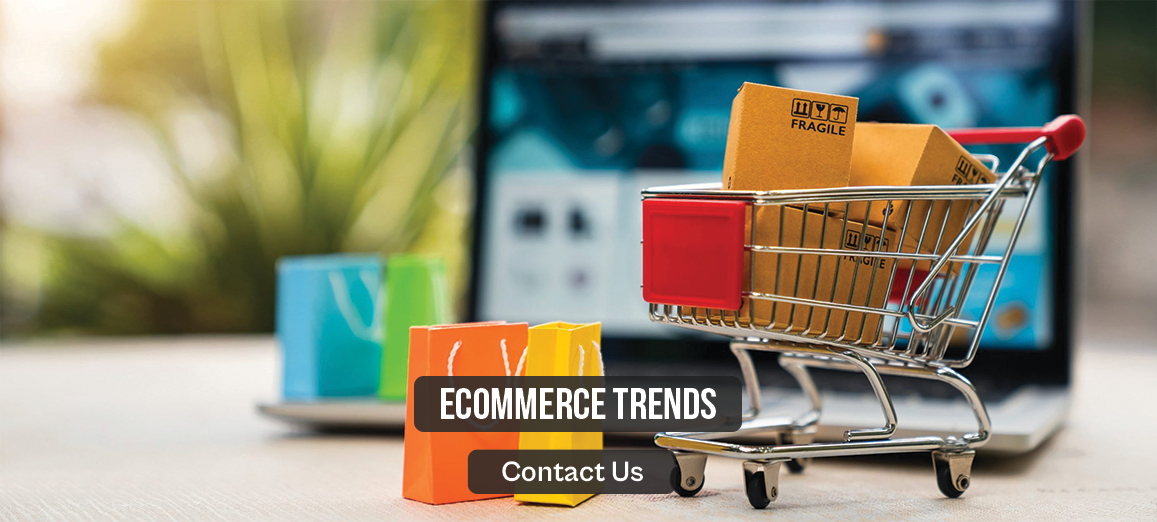Staying ahead of the curve is not just an advantage; it’s a necessity. As we navigate the digital retail landscape, several trends are reshaping the way businesses operate and consumers shop.
From augmented reality experiences to sustainable practices, let’s explore the latest e-commerce trends that are making waves in 2024.
Newest E-Commerce Web Development Trends:
Augmented Reality (AR) Shopping Experiences:
As technology continues to advance, augmented reality is increasingly becoming a game-changer in the ecommerce sphere. AR shopping experiences enable consumers to visualize products in their real-world environment before making a purchase. From trying on virtual clothes to placing furniture in a living room, AR enhances the online shopping journey, reducing uncertainties and increasing customer satisfaction.
Voice Commerce:
The era of voice-activated assistants has ushered in a new frontier for ecommerce. Voice commerce, powered by virtual assistants like Amazon’s Alexa and Apple’s Siri, allows users to make purchases, track orders, and inquire about products using voice commands. As smart speakers become more ubiquitous, businesses are optimizing their e-commerce platforms for voice search, revolutionizing the way customers interact with online stores.
Sustainable E-commerce Practices:
Environmental consciousness is no longer a mere trend but a fundamental shift in consumer behavior. Sustainable e-commerce practices, including eco-friendly packaging, carbon-neutral shipping, and ethically sourced products, are gaining traction.
Consumers are increasingly inclined to support brands that align with their values, prompting e-commerce businesses to adopt sustainable initiatives to reduce their environmental impact.

Live Commerce and Shoppable Content:
Live commerce, the marriage of live streaming and e-commerce, is redefining the online shopping experience. Brands and influencers host live events where they showcase products in real-time, allowing viewers to make purchases directly from the livestream. Shoppable content, including interactive videos and social media posts, transforms passive scrolling into an engaging shopping experience, blurring the lines between entertainment and commerce.
Subscription E-commerce Models:
Subscription-based models are gaining momentum, offering consumers convenience and personalized experiences. From curated monthly boxes to subscription-based services, businesses are tapping into the recurring revenue stream provided by subscription e-commerce. This model not only fosters customer loyalty but also provides businesses with predictable revenue, creating a win-win scenario.
Headless E-commerce Architecture:
In the pursuit of flexibility and agility, many e-commerce businesses are adopting headless architecture. Headless e-commerce separates the front-end (user interface) from the back-end (content management and business logic), allowing for more efficient updates and customization. This approach enhances the user experience and enables businesses to adapt quickly to changing market demands.
Personalization through Artificial Intelligence (AI):
Artificial intelligence is revolutionizing how ecommerce platforms personalize user experiences. AI algorithms analyze customer behavior, preferences, and purchase history to deliver tailored recommendations, personalized marketing messages, and dynamic pricing. The result is a more individualized and engaging shopping journey, increasing the likelihood of conversions.
Mobile Commerce Dominance:
The ubiquity of smartphones has catapulted mobile commerce into the spotlight. With consumers increasingly relying on mobile devices for shopping, e-commerce platforms are prioritizing mobile optimization. Responsive design, mobile apps, and seamless checkout experiences are pivotal in capturing the attention and loyalty of mobile-centric consumers. Our best E-commerce web development services focus on this trend.
Cryptocurrency and Blockchain Integration:
As digital currencies gain mainstream acceptance, some ecommerce platforms are embracing cryptocurrency payments. Blockchain technology, known for its security and transparency, is also being integrated into e-commerce operations, offering enhanced traceability for supply chains and ensuring the authenticity of products.
Social Commerce Evolution:
Social media platforms have evolved beyond being mere communication channels; they are now integral to the ecommerce landscape. Social commerce integrates shopping features directly into social media platforms, allowing users to discover and purchase products without leaving the app. Features like Instagram Shopping and Facebook Marketplace are transforming social media into dynamic e-commerce hubs.
Conclusion:
The e-commerce sector is dynamic, shaped by technological advancements, shifting consumer preferences, and a relentless pursuit of innovation. Businesses that adapt to these evolving trends are poised to thrive in the digital retail realm.
Whether it’s harnessing the power of augmented reality, embracing sustainability, or leveraging the convenience of voice commerce, the latest e-commerce trends offer a roadmap for businesses to navigate the future and deliver exceptional online shopping experiences. As we continue to ride the wave of innovation, the synergy between technology and commerce will undoubtedly redefine how we shop and interact with brands in the years to come.
Looking for E-commerce development services near me? Get in touch with ProMarketens today.






